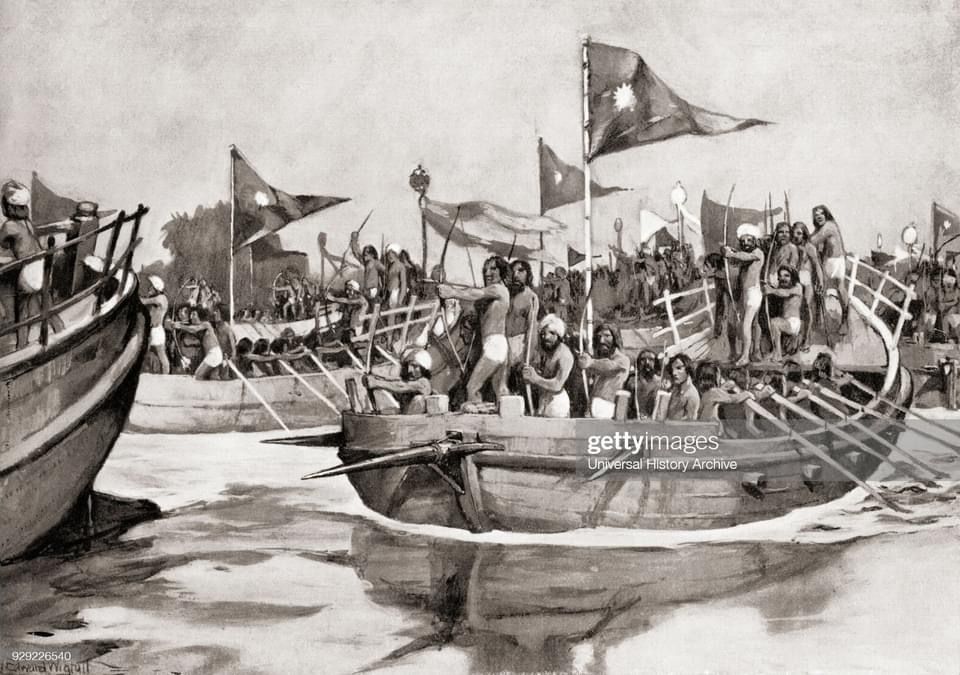This battle is not mentioned in Tarikh / Kitab e Yamini by Utbi which is a contemporary account. Ferishta who completed his book in 1612 mentions this battle. Ferishta does not give his source and seems to exaggerate when he states that Jats had 4000 or even 8000 boats. Multan was already under Mahmud and it is not possible for a tribe to have so many resources unless they were ruling clan over a large area.
Mahmud by this time (unlike for Utbi) was considered a legend and a great statesmen hence Ferishta tends to overestimate oppositions numbers to show the victory of Mahmud despite odds and in glowing colours. According to him Mahmud got 1400 boats built and defeated Jats in this remarkable naval battle, Ferishta writes
“In the end of the year Mahmood marched against the Juts/ Jats residing in the Jud mountains, who had molested his army on its return from Somnath. Having arrived at Multan, and finding that the country of the Juts was intersected by rivers, he ordered 1400 boats to be built, each of which was armed with six iron spikes, projecting from the prows and sides, to prevent then being boarded by the enemy, who were expert in that kind of warfare. ln each boat were twenty archers and five naphtha (flammable liquid hydrocarbon mixture) men, to attack and set fire to the enemy’s flotilla (fleet of boats). The Juts, having intelligence of this armament, sent their wives and children, together with their most valuable effects, into the neighbouring islands, and launching, according to some, 4000, and according to others, 8000 boats, ready maimed and armed, they prepared to receive the Mahomedans.
The fleets met, and a desperate conflict ensued, but the projecting spikes of the moslem boats did such execution when they ran against the craft of the Jats, that several of them were overset. The archers, at the same time, plied their arrows with such effect, that many of the enemy leaped overboard. Some of the Jat boats being in the meantime set on fire communicated their flames to others; some were sunk, some boarded, and others endeavoured to fly. From this scene of confusion few of the Juts escaped, so that those who were not killed fell into the hands of Mahmood.”
References :-
- Tarikh e Ferishta (1612) translated by John Briggs


